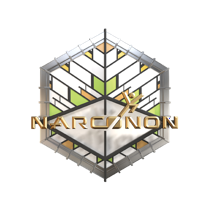Opioid Marketing Ultimately Results in Heroin Epidemic

For the last two decades, much of the country has been worried about the prescription opioid epidemic. And then to make matters worse, an increase in heroin addiction began in the mid-2000s, and it has worsened every year since. In many ways, the prescription opioid epidemic caused the heroin epidemic to kick off, leading to a host of additional problems.
A large percentage of heroin addicts started as opioid pill addicts but switched to heroin when pills became hard to find. We’ll dive into this phenomenon in more detail shortly, but the crucial point to understand is that the prescription opioid epidemic led to heroin addiction for many Americans.
How the Prescription Opioid Crisis Brought On a Surge in Heroin Addiction
The prescription opioid epidemic caused the current heroin epidemic. There is a direct, cause-and-effect relationship that has been occurring over the last ten years. According to the National Institute on Drug Abuse, heroin use among people who had used prescription opioids in the past was 19 times more common than heroin use among people who had not used prescription opioids. Furthermore, a study of young heroin users found that no less than 86 percent of them had used opioid pain relievers prior to using heroin.
Data from the American Society of Addiction Medicine corroborated the NIDA research. According to ASAM, four in five new heroin users started out misusing prescription painkillers. Quoting another critical point from their reporting on the issue:
“94% of respondents in a 2014 survey of people in treatment for opioid addiction said they chose to use heroin because prescription opioids were ‘far more expensive and harder to obtain.’”
How did this come about? How was it that a medication intended to help relieve pain ended up opening the door to heroin addiction for millions of Americans? To put it simply, when doctors and prescribers saw the harmful effect that opioid pain relievers were having on their patients, they began to reduce the total number of opioids prescribed each month. That led to a partial dry-up in the supply of painkillers.
What no one saw coming was that failing to offer treatment to those already addicted to opioid painkillers would cause them to turn to cheap, readily available heroin. People who at one point were taking entirely legal prescription pain medications suddenly found themselves looking for the same drugs on the street since their doctors were rapidly cutting back on prescribing. But when it became more difficult to find painkillers on the street, a surging market for heroin was created, with foreign cartels eager and willing to serve the growing demand.
The result of these developments? Huge profits for drug cartels, hundreds of thousands of prescription opiate addicts now switching to heroin, and a skyrocketing annual overdose death rate. About half of all opioid overdose deaths in the U.S. each year can be traced back to prescription opioids. So now prescription opioids are still a serious problem, and heroin overdose deaths are also soaring. That’s created a multi-pronged opioid crisis which is even more of a challenge for policymakers, criminal justice officials, and public health experts to address.
What is the Scope of Heroin Addiction Now?
According to the American Society of Addiction Medicine, at least 591,000 Americans were addicted to heroin in 2015 (likely underestimated), and about 13,000 addicts died from heroin overdoses in 2015. That number is up from 1,960 deaths in 1999. And more recently, according to the National Institute on Drug Abuse, as many as 15,000 Americans lost their lives to heroin each year in 2016, 2017, and 2018.
There is no doubt that heroin addiction in America is growing, making it difficult to determine the exact scope of it. For example, while ASAM reported about 591,000 people who struggled with heroin addiction in 2015, NIDA reported about 948,000 people struggling with heroin addiction in 2016, an increase of more than 350,000 addicts in just one year. Also according to NIDA, in 2006 only 90,000 people in the U.S. struggled with heroin addiction, indicating that this problem increased by more than 1,000 percent by 2016, in just one decade.
Hope for a Drug-Free Future

Heroin addiction and other opioid addictions are very dangerous, potentially lethal even. Even if a heroin addict “appears” to be functioning normally and simply going through their day-to-day life, it is essential to understand that any day could be their last one. That’s why getting them immediate help and addiction treatment has to be the priority.
If you know someone who is addicted to heroin, don’t let this addiction consume them for another day. Even if they never intended to become addicted—like so many people who sought painkillers for legitimate reasons and wound up addicted to heroin months or years later—that does not change the fact that they will need to get help from a professional, residential drug and alcohol rehab center.
Narconon offers an effective and unique drug and alcohol rehabilitation program. The program helps people find and address the underlying issues that caused them to become hooked on drugs in the first place, and it gives them the tools they need to face life without using replacement drugs.
Call Narconon today to get your loved one the help that they need.
Sources:
- https://www.drugabuse.gov/publications/research-reports/prescription-opioids-heroin/prescription-opioid-use-risk-factor-heroin-use
- https://www.asam.org/docs/default-source/advocacy/opioid-addiction-disease-facts-figures.pdf
- https://www.drugabuse.gov/publications/research-reports/heroin/how-heroin-linked-to-prescription-drug-misuse
- https://www.drugabuse.gov/drug-topics/trends-statistics/overdose-death-rates
- https://www.drugabuse.gov/publications/research-reports/heroin/scope-heroin-use-in-united-states
Reviewed by Claire Pinelli, ICAADC, CCS, LADC, RAS, MCAP


